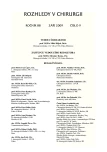Antimicrobial Treatment of Nosocomial Intra-Abdominal Infections – New Treatment Options with Tygecycline
Authors:
F. Vyhnánek; Adámková V.+; V. Ducháč; Teplan V. Jr; Jirásek T.++
Authors‘ workplace:
3. LF UK a FNKV Praha
; +Ústav lékařské mikrobiologie, přednosta: doc. MUDr. Marek Bednář, CSc.
; ++Ústav patologie, přednosta: prof. MUDr. Václav Mandy, CSc.
; Chirurgická klinika, přednosta: prof. MUDr. Robert Gürlich, CSc.
Published in:
Rozhl. Chir., 2009, roč. 88, č. 9, s. 503-507.
Category:
Monothematic special - Original
Overview
Introduction:
Nosocomial, intra-abdominal infections are extremely serious conditions, considering possibilities for their early diagnosis, as well as for their effective therapy. Multiresistant bacteria(Enterobacteriacae producing extended-spectrum beta-lactamases – ESBL Escherichia coli, Klebsiella species, vancomycin-resistant enterococci [VRE], and methicillin-resistant Staphylococcus aureus [MRSA]) are frequently isolated as pathogens of these infections. Tygecycline is among the novel wide- spectrum antibiotics affecting multiresistant bacteria, which are being introduced in clinical practice.
Aim:
The aim of this study is to assess actual sensitivity of tygecycline to the commonest pathogens of intra-abdominal infections, generated in hospitalized surgical patients. Based on the sensitivity tests, tygecycline was indicated for targeted antibiotic therapy in intra-abdominal infections.
Methods:
Sensitivity to tygecycline, aminopenicillins, fluorochinoloni and gentamycine was established for the following bacteria: Escherichia coli, Klebsiella pneumonie, Enterobacter cloacea, Proteus mirabilis. Sensitivity to oxacillin, clincamycine and tygecycline was tested in Staphylococcus aureus, and to fluorochinolini,gentamycine and tygecycline in Enterococcus faecalis, and to fluorochinoloni, gentamycine, ceftazidime and gentamycine in Pseudomonas aeruginosa.
Based on the sensitivity results, tygecycline was administered in two patients with postsurgical intra-abdominal infections caused by ESBL Escherichia coli and Klebsiella pneumonie. The initital dose of tygecycline was 100 mg i.v., followed by tygecycline 50 mg i.v. every 12 hours for 7 days.
Results:
The isolated bacteria showed 98–100% sensitivity to tygecycline, except Psudomonas aeruginosa, where 100% resistance was demonstrated. Targeted antimicrobial medication with tygecycline proved effective in postoperative nosocomial intra-abdominal infections, the both concerned patients recovered.
Conclusion:
The choice of antimicrobial medication in nosocomial intra-abdominal infections requires through evaluation considering various factors including prior antibiotic therapy, co-morbidities and the current status of sensitivity with respect to potential multiresistant pathogens. Tygecycline shows significant in vitro efficacy against resistant gram-positive and key gram-negative facultative bacteria, which are a common cause of intra-abdominal infections in surgery patients. Clinical experience has shown that tygecycline is safe and effective in the treatment of complicated intra-abdominal infections.
Key words:
intra-abdominal infections – tygecycline – in vitro sensitivity – indications for therapy
Sources
1. Dupont, H. The empiric treatment of nosocomial intra-abdominal infections. Int. J. Infect Dis., 2007 ,11: Suppl. 1: S1–S6.
2. Cheadle, W. G., Spain, D. A. The continuing challenge of intra-abdominal infection. Am. J. Surg., 2003, 186: 5: 15–22.
3. Vogel, T. R., Dombrovskiy, V. Y., Lowry, S. F. Trends in postoperative sepsis: Are we improving outcomes? Surg. Infect., 2009, 10: 1: 71–78.
4. Mazuski, J. E. Vancomycin-resistant enterococcus: risk factors, surveillance, infections, and treatment. Surg. Infect., 2008, 9: 6: 567–571.
5. Fomin, P., Beran, M., Gradauskas, A., et al. Tygecycline is efficacious in the treatment of complicated intra-abdominal infections. Int. J. Surg., 2005, 3: 1: 35–47.
6. Homer-Vanniasinkam, S. Treatment of intra-abdominal and skin and soft tissue infections: The role of the glycylcyclines. Int. J. Surg., 2005, 4: 1: 45–52.
7. Marešová, V., Urbánková, P. Tigecyklin. Remedia, 2008, 18: 3: 194–200.
8. Wilcox, M. H. Efficacy of tigecycline in complicated structure infections and complicated Intra-abdominal infections. J. Chemother., 2005, 17: Suppl. 1: S23–S29.
9. Babinchak, T., Ellis-Grosse, E., Dartois, N., et al. The efficacy and safety of tigecycline for the treatment of complicated intra-abdominal infections: analysis of pooled clinical trial data. Clin. Infect. Dis., 2005, 41: Suppl. 5: S354–S367.
Labels
Surgery Orthopaedics Trauma surgeryArticle was published in
Perspectives in Surgery

2009 Issue 9
Most read in this issue
- Compressive Syndromes of the Subscapular Nerve – Experience with Surgery
- Fast Track in Intestinal Surgery; Current Review
- Foreign Bodies – Uncommon Causes of GIT Injuries
- Laparoscopic Adrenalectomy
